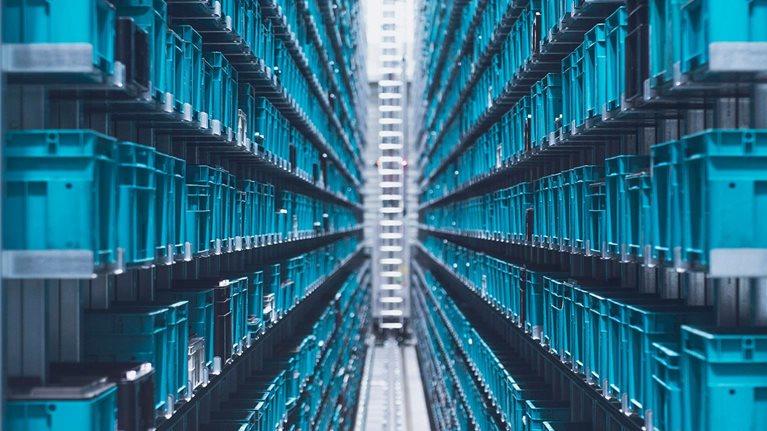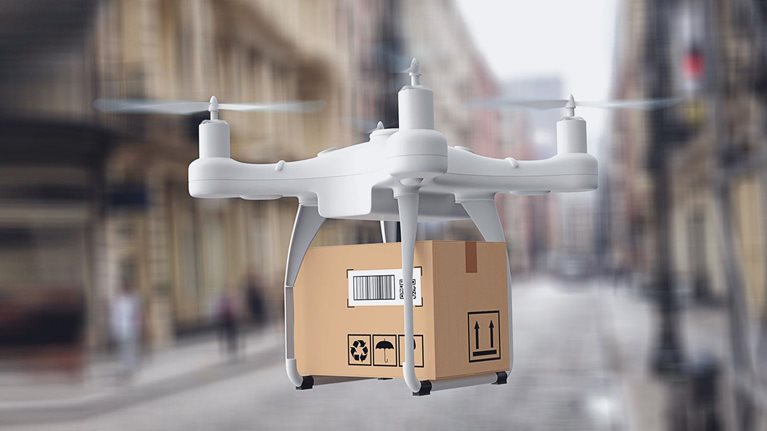SF Express went public in 2017. Today, it is China’s largest express-delivery company, offering customers a full range of logistics services in the world’s biggest, busiest, and most complicated market. Assistant CEO Eddie Huang met with McKinsey’s Monica Toriello and Richard Wang to discuss his company’s—and the industry’s—dynamic present and intriguing future.
Interview transcript
McKinsey: How much do you think China’s parcel-delivery market will grow between now and 2030?
Eddie Huang: Today, SF Express already handles a daily volume of about 20,000 tons in parcel delivery, and that’s only domestically. Looking at a ten-year time horizon, I think the overall market will grow by 15 percent per annum at least.
On the B2C side, customer demand is driven by both the technology and convenience of e-commerce. So if 5G, new mobile tools, and other technologies make it easier for consumers to make decisions and place orders, then the B2C parcel-delivery market will continue to grow by 15 to 30 percent per annum in China.
Then there’s the B2B market, where demand will be affected by 3-D technology. Take an example from the fashion industry: in the past, fashion companies changed their seasonal collections every three months, but now, with new technology, they can do monthly changes. They place new orders every month. The design phase—and the order cycle—is much shorter. So, on the one hand, that increases demand for parcel services to send samples. On the other hand, 3-D printing enables companies to produce samples on-site instead of relying on express services to deliver samples from the factory. So 3-D printing is both a plus and minus in B2B parcel delivery. I think the B2B market may slow down a little bit but still continue to grow by 10 to 15 percent per annum.
McKinsey: That means your company will need to deliver many more packages—and will need to do it even faster than you do today, because consumer expectations for speed of delivery keep increasing. In 2030, will same-day delivery be standard in all Chinese cities?
Eddie Huang: I believe 12-hour delivery will be a standardized service, pan-China, in five years. By pan-China, I mean most of the customers in China’s 600 cities. I would say that’s actually a conservative assumption: in 2020, SF Express will be opening a new hub airport in central China, with 100 aircraft flying from everywhere to this hub. That will enable a very fast exchange of goods. So, for a majority of products and for most customers in most cities, six- to 12-hour delivery will be possible in China much sooner than 2030.
McKinsey: Will SF Express also be able to do same-day delivery to suburban and rural areas?
Eddie Huang: That business is actually becoming more attractive for us because the infrastructure in those areas is easier to build than in cities. Land-acquisition costs are lower; unmanned vehicles, like drones, are easier to deploy. And the costs of unmanned vehicles are starting to get to a range that we can accept.
McKinsey: What about outside China? How do you see your international business evolving over the next decade?
Eddie Huang: Frankly, we don’t have a global footprint at this moment; we are in only about 20 percent of the countries that DHL and FedEx are in. In ten years, I believe we will have at least comparable capability to the big three [DHL, FedEx, and UPS]. For example, we probably will expand our cooperation with Flexport, a US-based freight forwarder.
I believe 12-hour delivery will be a standardized service, pan-China, in five years.
But the international business is more complex than our domestic business. There’s already a lot of established structure in the industry, which will take time to change. Some supplier–customer relationships in international markets—relationships between carriers, freight forwarders, and shippers—have existed for more than 100 years; it will take longer than ten years to break into some of those relationships. Also, we have to deal with cross-border operations and customs issues, which add complexity.
McKinsey: You mentioned your investment in Flexport. What other kinds of acquisitions or partnerships do you foresee for SF Express in the coming years?
Eddie Huang: Given our position in the market, acquisition—not partnership—will continue to be the best solution for us when it comes to working with our competitors and peers. But we could partner with AI [artificial intelligence] companies, technology companies, or maybe companies that own large fleets.
For us, partnership hinges on two things. The first is data exchange: for any partner that joins our ecosystem, we want to enable the integration of data—including operational, financial, and risk-management data. The other is the financial system: our partners should share the same financial system so that we can, for example, provide loans to help each other on short-term cash-flow issues.
The financial system will be a big value driver for us in the future. Our long-term aspiration is to make the logistics service almost zero-cost for our customers; financial services will provide the profits. I’m not sure whether that’s a ten-year dream or whether it will take longer, but we’re working on that. Right now, our financial-services income is already 50 percent of our profit.
Would you like to learn more about our Travel, Logistics & Transport Infrastructure Practice?
McKinsey: What about partnering with the dominant ecosystems like Alibaba or JD?
Eddie Huang: We’re open to that. But I think sooner or later the trade side of the market will be less consolidated; it will be more fragmented. So, for us, a partnership with a big trading platform would be more of a tactical move—not a strategic one.
McKinsey: What shocks or disruptions is SF Express preparing for, if any?
Eddie Huang: We are expecting unexpected things every day, particularly in this fast-changing industry. Right now, I’m paying close attention to new vehicles. In ground transportation, there are many new models coming to the market with much higher engine efficiency and lower costs than our existing vehicles. Every newcomer to the industry is investing in the latest equipment and new kinds of vehicles. So, as an incumbent player, we feel the challenge: no matter how good our network is, there’s always a market-entry opportunity for new investors because the equipment-acquisition costs and utilization costs are much lower for these new vehicles. That’s really a big uncertainty for us.
Another big, big challenge for us is labor. The numbers are actually quite scary. For example, eight years ago the average age of construction workers in China was about 40. Now it’s 46. In ten years, the average age could be over 50, right? Also, today’s young people don’t want to work long hours. They want to have more freedom. And even if you offer to pay more, they will say no, because they want to have more freedom.
McKinsey: What do you think are some of the solutions to the talent challenge?
Eddie Huang: No doubt, technology is a huge area we have to invest in. Technology can help us improve efficiency and build the right infrastructure. The airport we are building in central China is not a traditional airport; it’s a “smart” airport. We are thinking about how to make the whole network—including all our sorting centers—more digitized. Everything needs to be an IoT [Internet of Things] type of operation; IoT will help us become more efficient and will help us make better decisions than we do today.
Investments in technology and smart equipment is one part of the solution. Of course, another important part is thinking about our employees’ needs. We have about a half-million couriers in China now. We have to provide a more flexible compensation system so that our employees can choose how long they want to work and how much they want to make every day. Then they will enjoy their work and they will stay with SF Express. Even in 2030, the best service will still come from people, not technology—so it’s important that we try to keep the best employees.


